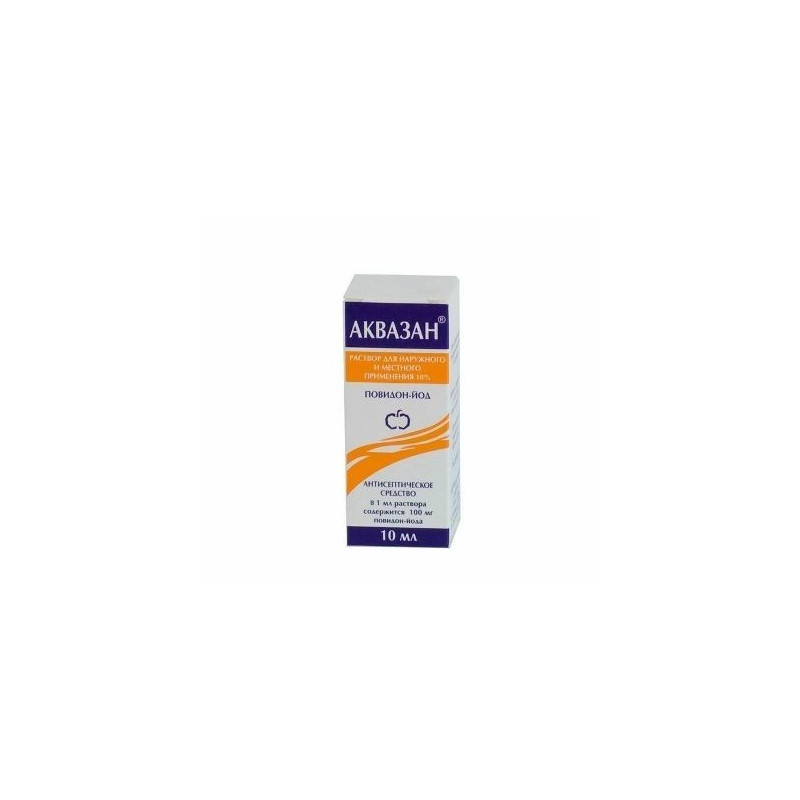



 All payments are encrypted via SSL
All payments are encrypted via SSL
 Full Refund if you haven't received your order
Full Refund if you haven't received your order
Solution for local and external use
Outwardly, locally.
For disinfection of the skin (baths, lubrication) used 1% solution. Akvazan applied to the surface by lubrication, spray-method, in the form of a wet lining.
When conducting local baths and lubrication exposure is not less than 2 minutes.
To treat the hands of the surgical personnel, 5 ml of the solution are rubbed with palms up to the elbow for 5 minutes (water can be added to form the foam), then rinsed thoroughly. The procedure is repeated twice.
Infected skin and mucous membranes are treated with a 10% solution of Akvazan for 1-2 minutes, then the solution is thoroughly washed off.
Do not use the solution of Akvazan in combination with other antiseptic agents, enzymatic ointments. Trial use is advisable before systematic use of povidone-iodine preparations. In the presence of blood, the bactericidal effect of povidone-iodine may decrease. Povidone-iodine should be avoided in the eyes.
Pharmaceutically incompatible with disinfectants containing mercury; oxidizing agents, alkali salts and substances with an acidic reaction.
The drug should be stored in a dry, cool, dark place at temperatures from 0 ° to 25 ° C.
Bottle of 10 ml.
Akvazan has an antiseptic effect. It is an Iodine in the form of a complex polyvinylpyrrolidone iodine. The concentration of active iodine is from 0.1% to 1%. It has a wide spectrum of antimicrobial action. Active against bacteria (including Mycobacterium tuberculosis), fungi, viruses, protozoa. Polyvinylpyrrolidone iodine refers to the iodophore that bind iodine. In contact with skin and mucous membranes, iodine is gradually and evenly released, exerting a bactericidal effect on microorganisms. At the site of the use of povidone-iodine, a thin colored layer remains, which persists until the entire amount of iodine is released, after which its action ceases.
Burns, abrasions, cut wounds, skin ulceration (incl.trophic ulcers of the leg), pressure sores, surface-infected dermatosis; prevention of infection of the wound surfaces. Infections of the nasopharynx. Fungal lesions of the genital organs, trichomoniasis; bacterial vaginitis.
Treatment of the patient's skin before and after operations, biopsy, puncture, blood collection, injection, pre- and postoperative treatment of the surgeon’s hands, medical personnel, hygienic treatment of the hands when caring for infected patients, processing tools and patient care items.
Hypersensitivity to iodine and other components of Akvazan, thyrotoxicosis, Duhring herpetiform dermatitis, thyroid adenoma, simultaneous therapy with radioactive iodine; neonatal period (especially in premature babies). With caution. CKD, pregnancy (II-III trimesters), lactation period.
Akvazan